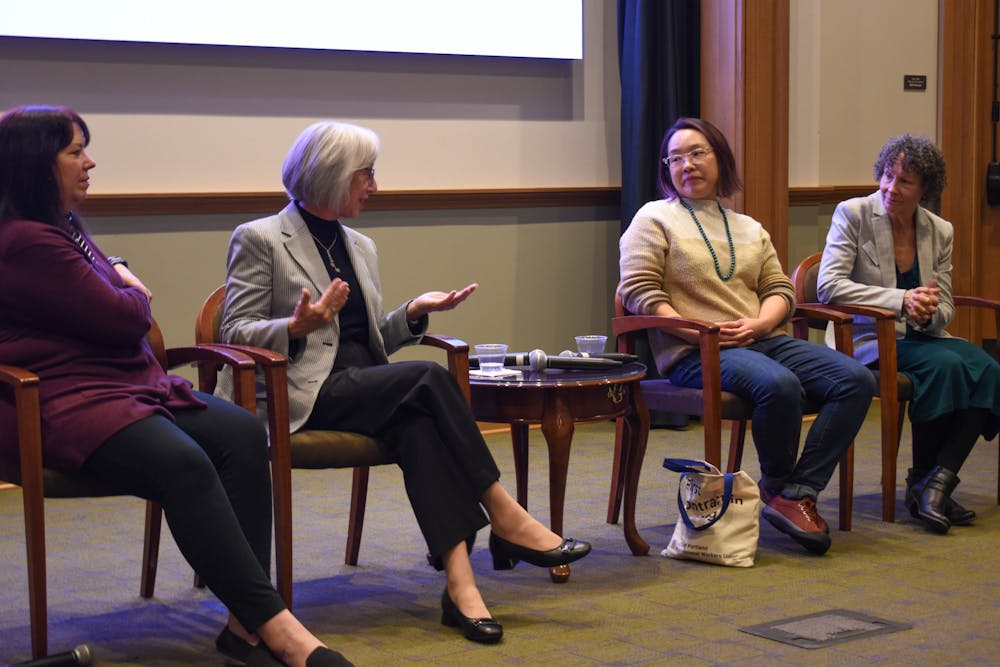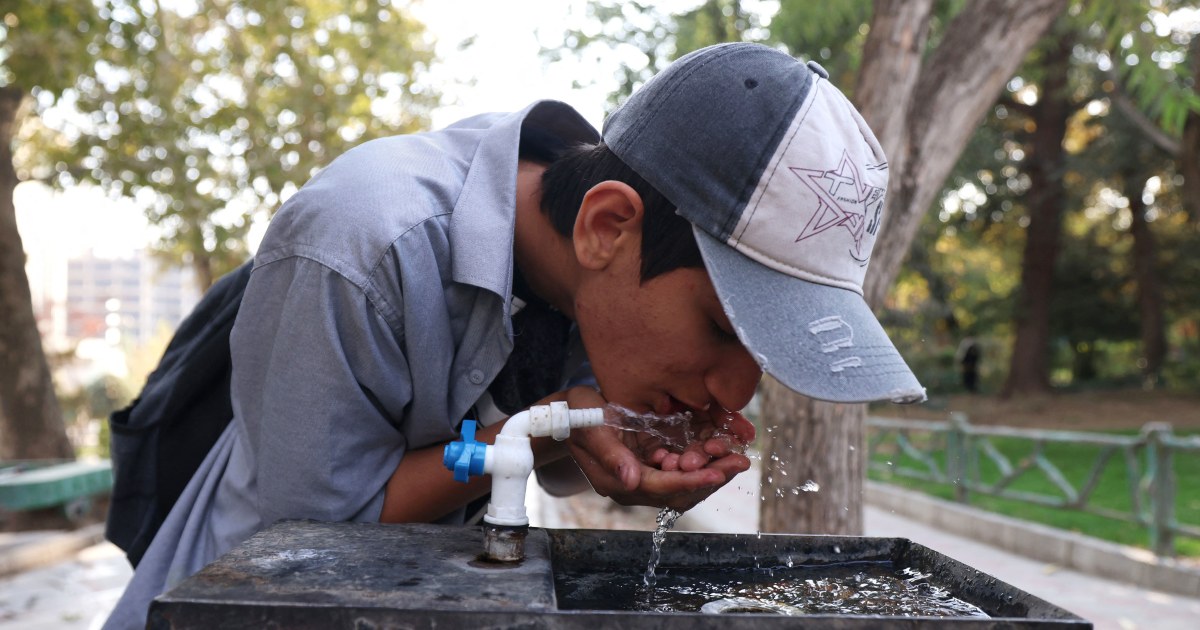NI Health: Mike Nesbitt “U-turn” leaves careworkers demotivated – BBC

Report on the Reversal of the Real Living Wage Commitment for Social Care Workers in Northern Ireland and its Impact on Sustainable Development Goals
Introduction
A recent policy reversal by the Health Minister of Northern Ireland, Mike Nesbitt, regarding the implementation of the Real Living Wage (RLW) for independent sector social care workers has significant implications for several United Nations Sustainable Development Goals (SDGs). The decision to exclude approximately 24,000 care workers from a pay parity agreement granted to other health staff undermines progress towards goals concerning poverty, gender equality, decent work, and health and well-being. This report analyses the situation based on statements from the Independent Health Care Providers (IHCP) and the Department of Health (DoH).
Analysis of Impacts on Sustainable Development Goals
SDG 8: Decent Work and Economic Growth & SDG 1: No Poverty
The failure to implement the RLW directly contravenes the principles of SDG 8, which advocates for fair wages and decent work for all. The social care workforce, which delivers over 80% of social care in the region, remains the lowest paid within the health system. This decision perpetuates financial precarity and undermines economic stability for thousands of families.
- Financial Insecurity: The IHCP reports that the reversal has left staff “demoralised and demotivated,” facing worsening financial insecurity. This directly impacts SDG 1 by failing to lift low-wage workers out of poverty.
- Recruitment and Retention Crisis: Providers report extreme difficulty in recruiting and retaining staff, as they cannot compete with higher wages offered in sectors like retail and hospitality. This creates an unstable workforce, hindering the sustainable growth of a critical public service sector.
SDG 5: Gender Equality & SDG 10: Reduced Inequalities
The policy decision disproportionately affects women, creating a significant setback for SDG 5, and widens the pay gap between different classes of health workers, contrary to the aims of SDG 10.
- Disproportionate Impact on Women: The social care workforce is composed of 94% women, many of whom are identified as young mothers, single parents, or primary carers. The denial of a pay uplift unfairly targets a female-dominated profession, reinforcing gender-based economic inequality.
- Increased Inequality within Health Sector: While doctors, nurses, and other auxiliary staff received pay parity with UK colleagues, the exclusion of independent care workers from the £209m uplift creates a stark and “indefensible” inequality within the broader health and social care system.
SDG 3: Good Health and Well-being
The stability of the social care sector is fundamental to achieving SDG 3, which aims to ensure healthy lives and promote well-being for all at all ages. The current situation threatens the quality and availability of care for vulnerable populations.
- Quality of Care: A demoralised and transient workforce is less able to provide the consistent, high-quality care essential for the well-being of service users, including the elderly and those requiring domiciliary support.
- System Sustainability: The inability to maintain a stable workforce threatens the entire social care infrastructure, which is vital for supporting the broader health system and ensuring positive health outcomes for the community.
SDG 16: Peace, Justice and Strong Institutions
The reversal of public commitments undermines trust in governmental institutions, a key component of SDG 16. A pattern of unfulfilled promises has eroded confidence among the social care workforce.
- December 2022: Senior health officials committed that all new social care contracts would be built on the RLW.
- February 2025: Health Minister Nesbitt informed the health committee that the RLW would be funded and money had been identified.
- July 2025: The Health and Social Care NI Reset Plan committed an additional £25m to support the introduction of the RLW.
According to the IHCP, these repeated public commitments have generated “false hope” and the subsequent reversal damages the credibility and accountability of the Department of Health.
Conclusion
The decision to withhold the Real Living Wage from independent social care workers in Northern Ireland represents a significant policy failure with far-reaching consequences. It actively works against the achievement of multiple Sustainable Development Goals by perpetuating poverty (SDG 1), reinforcing gender inequality (SDG 5), denying decent work (SDG 8), widening social inequalities (SDG 10), and threatening the stability of the health system (SDG 3). Furthermore, the reversal of repeated public pledges damages institutional trust and accountability (SDG 16), creating a critical challenge for sustainable and equitable development in the region.
Analysis of Sustainable Development Goals in the Article
-
Which SDGs are addressed or connected to the issues highlighted in the article?
The article highlights several issues that connect to multiple Sustainable Development Goals (SDGs). The primary focus on low pay, financial insecurity, and working conditions for care workers, who are predominantly women, links directly to goals concerning poverty, health, gender equality, decent work, and inequality.
- SDG 1: No Poverty: The article directly addresses this goal by stating that “Thousands of care workers face worsening financial insecurity” due to the failure to implement a promised pay rise. This pushes a vulnerable workforce closer to poverty.
- SDG 3: Good Health and Well-being: The stability of the social care workforce is crucial for public health. The article notes that providers find it “very difficult to recruit and retain staff,” which threatens the delivery of care services that “are often lifesaving” and constitute “over 80% of social care in Northern Ireland.”
- SDG 5: Gender Equality: The issue has a significant gender dimension, as the article specifies that the workforce is overwhelmingly female (“94% of whom are women”). It also notes that “Many are young mothers, single parents, or primary carers,” making them particularly vulnerable to financial hardship and highlighting the economic undervaluing of a female-dominated profession.
- SDG 8: Decent Work and Economic Growth: This is the most central SDG to the article. The entire conflict revolves around the failure to implement the “Real Living Wage (RLW),” which is a benchmark for decent work. The article describes the social care workforce as the “lowest paid across the health and social care system,” directly contradicting the principles of decent work and fair pay.
- SDG 10: Reduced Inequalities: The article exposes significant inequalities within the health and social care system. It points out the “pay discrepancy between health care workers,” as doctors and nurses received pay parity while care workers in the independent sector were excluded from the pay offer. This decision widens the economic gap between different groups of essential workers.
-
What specific targets under those SDGs can be identified based on the article’s content?
Based on the issues discussed, several specific SDG targets are relevant:
- Target 1.2: By 2030, reduce at least by half the proportion of men, women and children of all ages living in poverty in all its dimensions according to national definitions. The failure to provide a Real Living Wage directly impacts the financial security of care workers and their families, hindering progress toward this poverty reduction target.
- Target 3.c: Substantially increase health financing and the recruitment, development, training and retention of the health workforce. The article’s statement that providers find it “very difficult to recruit and retain staff” due to low pay directly relates to this target. The lack of competitive wages undermines the stability of the health workforce.
- Target 5.4: Recognize and value unpaid care and domestic work through the provision of public services, infrastructure and social protection policies. While the work discussed is paid, it is part of the broader care economy that is systemically undervalued. The fight for a Real Living Wage is a fight to properly value this essential, female-dominated work.
- Target 8.5: By 2030, achieve full and productive employment and decent work for all women and men… and equal pay for work of equal value. The core issue of the article—the demand for the Real Living Wage—is a direct effort to achieve “decent work” and fair compensation for the social care workforce.
- Target 10.4: Adopt policies, especially fiscal, wage and social protection policies, and progressively achieve greater equality. The article critiques the government’s wage policy decision, which excluded social care workers from a pay uplift, thereby failing to use policy to reduce inequality as this target recommends.
-
Are there any indicators mentioned or implied in the article that can be used to measure progress towards the identified targets?
The article contains several explicit and implicit indicators that can be used to measure progress:
- The Real Living Wage (RLW): The RLW itself serves as a primary indicator. Whether or not it is implemented for the approximately 24,000 independent care workers is a clear, measurable metric for progress on decent work (SDG 8) and poverty reduction (SDG 1).
- Staff Recruitment and Retention Rates: The article mentions that providers find it “very difficult to recruit and retain staff.” Tracking these rates over time would be a key indicator of the health and stability of the social care workforce (SDG 3).
- Pay Discrepancy/Parity: The article highlights the disparity in pay awards between doctors/nurses and care workers. Measuring the wage gap between these groups is a direct indicator of inequality within the sector (SDG 10).
- Gender Composition of the Low-Paid Workforce: The statistic that the workforce is 94% female is a powerful indicator. Tracking the wages and conditions of this demographic is essential for measuring progress on gender equality (SDG 5).
- Public Investment in Social Care Wages: The article mentions specific financial figures, such as the “NHS pay-review uplift of £209m” and a previously committed “investment of an additional £25m in the independent social care sector.” The allocation and use of such funds are tangible indicators of government commitment (SDG 3, SDG 10).
Summary of Findings
| SDGs | Targets | Indicators |
|---|---|---|
| SDG 1: No Poverty | 1.2: Reduce at least by half the proportion of people living in poverty. | Proportion of care workers earning below the Real Living Wage (RLW); level of financial insecurity among care staff. |
| SDG 3: Good Health and Well-being | 3.c: Substantially increase health financing and the recruitment, development, training and retention of the health workforce. | Recruitment and retention rates for social care staff; public investment allocated to the independent social care sector. |
| SDG 5: Gender Equality | 5.4: Recognize and value unpaid care and domestic work. | The gender pay gap within the broader health sector; the percentage of the workforce that is female (stated as 94%). |
| SDG 8: Decent Work and Economic Growth | 8.5: Achieve full and productive employment and decent work for all women and men… and equal pay for work of equal value. | Implementation of the Real Living Wage (RLW); comparison of care sector wages to other sectors like retail and hospitality. |
| SDG 10: Reduced Inequalities | 10.4: Adopt policies, especially fiscal, wage and social protection policies, and progressively achieve greater equality. | Pay discrepancy between independent care workers and other NHS staff; inclusion/exclusion of care workers in government pay review uplifts. |
Source: bbc.com
What is Your Reaction?
 Like
0
Like
0
 Dislike
0
Dislike
0
 Love
0
Love
0
 Funny
0
Funny
0
 Angry
0
Angry
0
 Sad
0
Sad
0
 Wow
0
Wow
0















































































